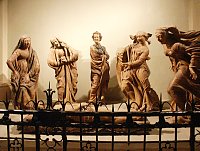
|
Partial view-- with the figure to the far left missing (Joseph of Arimathea) See below.Although these figures in the sculptural group were originally painted, today, they are now pretty much in the unpainted terra cotta state. Still the powerfully expressively quality, reminiscent of Northern Gothic art, remains. The figures represent, of course, those who were present at Christ's entombment, although the Biblical versions are not entirely consistent. Present in this grouping are from left to right: Joseph of Arimathea (not pictured here), Mary (Salome--the mother of John the Evangelist), the Virgin Mary, John, Mary (of Cleophas--Mother of James the Lesser), and Mary Magdalen. |
| |
|
Jesus, the calm center around whom the figures are groupedMore typically in a Pietà (especially Northern versions), the dead Christ will be sprawled across the Virgin's lap. (See even Michelangelo's version in St. Peter's.) Here he is serenely asleep on a decorative scalloped coverlet. |
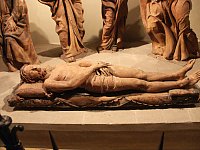
|
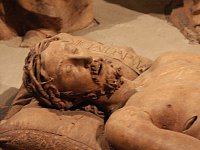
|
| |
|
Mary Magdalen--dramatic griefThe exaggerated gestures, the expressive hands, the flying robe and head scarf, the wailing mouth--all combine to signify a horrified and explosive sorrow. In spite of clothing that appears heavy in the terra cotta, the Magdalen's sexual power and appeal is still apparent.
|
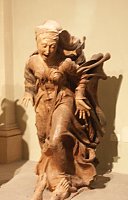
|

|
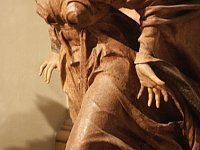
|
| |
|

|
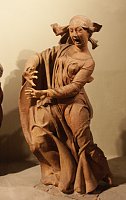
|
Mary of CleophasExpressive gestures here include her hands, almost pushing away the sight of the dead Christ, the violent motion of her body, and the flailing multiple flaps of her head piece--not to mention the screaming open mouth. |
| |
|
|
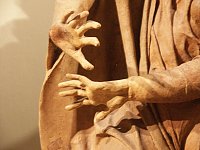
|
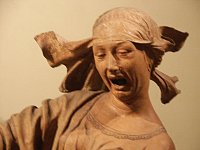
|
| |
|
John, the so-called beloved ApostleLooking much older here than he does in most depictions, John is calmer than the female figures. His hand supports his chin and he has pulled his robe up around his body in a kind of protective gesture. |

|
| |
|
The Virgin MaryWhile Mary is often unnaturally young in depictions of Christ's Crucifixion and Entombment (see again Michelangelo's versions in St. Peter's and the Florence Duomo Museum), here she looks her age. Her grief seems more internal, less histrionic with closed eyes, gripped hands, and an enclosed form. |
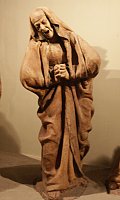
|

|
| |
|

|
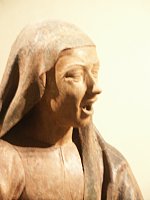
|
Mary SalomeHer grief is communicated through the faltering position, as if she is sinking into the ground. Like the open mouths of the other women, hers is releasing a cry of pain. |
| |
|
Joseph of Arimathea--the least dramatic figureUnlike the other figures, he has accoutrements--a hammer in his hand and pliers in the belt at his waist (for extracting nails). According to the Gospels he donated his tomb for the burial of Jesus, took Jesus' body down from the cross and prepared it for burial. Although in some sources he is described as a follower of Jesus, his grief is less obvious (the drapery folds hang naturally rather than flying out in violent motion) and he seems to be depicted in a more practical role. |
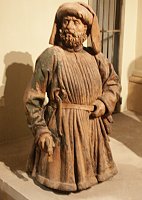
|
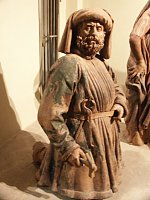
|
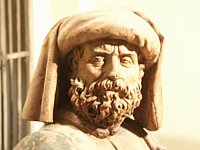
|




















 Click here to return to index of art historical sites.
Click here to return to index of art historical sites.
 Click here to return to index of artists and architects.
Click here to return to index of artists and architects.
 Click here to return to chronological index.
Click here to return to chronological index.
 Click here to see the home page of Bluffton University.
Click here to see the home page of Bluffton University.

